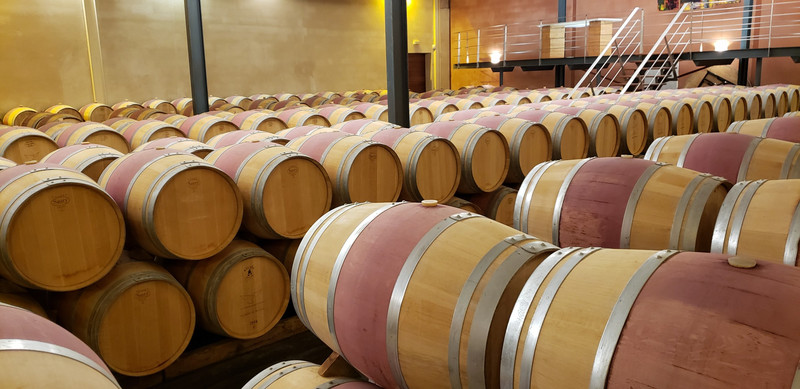Regardless of the other great wine regions, like Lodi, Central Coast, and Temecula, Californias famous Napa Valley remains number one in my heart. Why is that true? In 1968, the Napa County Board of Supervisors passed a landmark zoning ordinance that made Napa Valley the first Agricultural Preserve in the United States. The Ag Preserve, as it is known, mandated agriculture as the highest and best use of Napa Valley land. The effect of the ordinance was to severely development not directly related to agriculture. As visitors discover, with the exception of the small town of Napa itself, there are no strip malls or department in the valley proper. Instead, Napa Valley is home to 40,000+ acres of beautiful vineyards, and the picturesque rural landscape remains intact. As for the other possible answers, there is no minimum size of a vineyard in the Napa Valley. (You can plant one thousand vines; you can plant ten vines. There is no minimum). Many vineyards are very small and 95% are family owned. Regarding mountains, vineyards have existed in the mountains around Napa Valley for well over a hundred years. Today, however, forest land is tightly protected in the valley,
and planting on steep slopes is prohibited. As a practical and legal matter, its extremely difficult to plant a vineyard from scratch in the mountains. And finally, while vineyards are the dominant form of agriculture in the valley, all types of agriculture are (except grown cannabis, which is not allowed).What is dosage? Dosage is the degree of sweetness of the liqueur dexpdition of sugar and reserve wine) added at the very end in the making of a Champagne wine. The extent of the sugar in the dosage determines whether a Champagne wine will be Brut, Extra Dry, and so on. Over the last fifteen years, dosage levels in Brut Champagne wines (one of the least sweet) have dropped an average of 2.8 grams per liter. The rise in temperatures caused by climate change means that the Champenois are harvesting riper grapes; in addition, they are leaving the wines on the yeast lees for longer, both of which mitigate against the need for as much sugar as in the past.And the red white conundrum? As you probably know, virtually all red wine grapes have
white juice. One day, I found myself wondering why? I asked Carole Meredith PhD, the leading grapevine geneticist in the U.S. She explained: The red grapes that have white juice are all varieties of Vitis vinifera, the European wine grape. These red grapes have color pigment in the berry skin, but not in the berry pulp. As to why, one can only speculate. The skin color of the fruit presumably helps to attract birds or other animals, which will then disperse the seeds. There would be no adaptive advantage to also having pigment in the pulp, which is not visible. Red apple varieties, for example, have pigment in the skin but not in the pulp. I thought: So thats it. But Meredith went on, Then again, look at plums – some have color inside and some dont. Hmmm.Only 4%!o(MISSING)f California wine grapes are grown in the Napa Valley. Although the name Napa Valley is known around the world, the region itself is rather small. Napa Valley has just 44,000 acres of vines, making it 1/6 the size of Bordeaux. In fact, the Valley represents just 0.4%!o(MISSING)f the worlds wine production. There are 700 grape growers and 475 physical wineries in the Napa Valley, 92%!o(MISSING)f which are Napa Valley was named an AVA (American Viticultural Area) in 1981, the first in California, and only the second in the U.S. Today, there are 16 AVAs designated within in the Napa Valley, each with a distinct microclimate. Howell Mountain and Carneros were the first to be established in 1983, and the latest to be recognized was Coombsville, in 2011.









